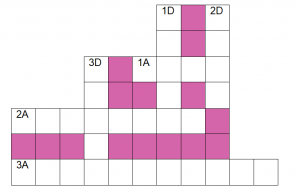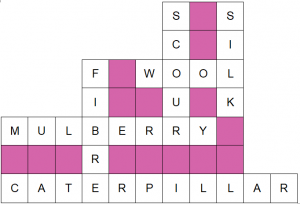NCERT Solutions for Class 7 Science Chapter 3 – Fibre to Fabric, contains solutions to various questions in Exercise for Chapter 3. At the end of the Solutions, all the keywords and Notes which are important to understand NCERT Solutions for Class 7 Science Chapter 3- Fibre to Fabric, have been explained in a simple and easy to understand manner. NCERT Solutions for Class 7 help to check the concept you have learnt from detailed classroom sessions and application of your knowledge.
| Category | NCERT Solutions for Class 7 |
| Subject | Science |
| Chapter | Chapter 3 – Fibre to Fabric |
Download NCERT Solutions for Class 7 Science Chapter 3 – Fibre to Fabric
NCERT Solutions For Class 7 Science Chapter 3 – Fiber To Fabric – NCERT Exercise
Question 1:-
You must be familiar with the following nursery rhymes:
(i) ‘Baa baa black sheep, have you any wool.’
(ii) ‘Mary had a little lamb, whose fleece was white as snow.’
Answer the following:
(a)Which parts of the black sheep have wool?
(b)What is meant by the white fleece of the lamb?
Answer 1:-
(a)Wool is obtained from the hairy fibres of sheep.
(b)The covering of wool on the skin of lamb that is white in colouris called white fleece.
Question 2:-
The silkworm is (a) a caterpillar, (b) a larva. Choose the correct option.
(i) a
(ii) b
(iii) both a and b
(iv) neither a or b
Answer 2:-
(iii) both a and b
Question 3:-
Which of the following does not yield wool?
(i) Yak
(ii) Camel
(iii) Goat
(iv) Woolly dog
Answer 3:-
(iv) Woolly dog
Question 4:-
What is meant by the following terms?
(i) Rearing
(ii) Shearing
(iii) Sericulture
Answer 4:-
(i) Rearing: The process of raising animals that provide animal fibres upto a stage where they are capable of giving fibres, is called rearing. Silk moth’s eggs are reared for silk, sheep are reared for wool.
(ii) Shearing: The process of extracting wool from the body of animals is called shearing. It is done with a machine similar to a barber’s razor. The fleece of the animal is shaved off along with a layer of skin to obtain wool.
(iii) Sericulture: The process of raising silkworms for extracting silk from them is called sericulture.
Question 5:-
Given below is a sequence of steps in the processing of wool. Which are the missing steps? Add them.
Shearing, __________, sorting, __________, __________, _________.
Answer 5:-
Shearing, scouring, sorting, cleaning of burns, dyeing, rolling.
Question 6:-
Make sketches of the two stages in the life history of the silk moth which are directly related to the production of silk.
Answer 6:-

Question 7:-
Out of the following, which are the two terms related to silk production?
Sericulture, floriculture, moriculture, apiculture and silviculture.
Hints: (i) Silk production involves cultivation of mulberry leaves and rearing silkworms.
(ii) Scientific name of mulberry is Morus alba.
Answer 7:-
Terms related to silk production are – sericulture, moriculture
Question 8:-
Match the words of Column I with those given in Column II:

Answer 8:-

Question 9:-
Given below is a crossword puzzle based on this lesson. Use hints to fill in the blank spaces with letters that complete the words.

Down
(D) 1 : Thorough washing
2 : Animal fibre
3 : Long thread like structure
Across
(A) 1 : Keeps warm
2 : Its leaves are eaten by silkworms
3 : Hatches from egg of moth
Answer 9:-

Down (D)
1– Scour
2– Silk
3– Fibre
Across (A)
1– Wool
2– Mulberry
3– Caterpillar
Topics Covered in Chapter 3 Fibre to Fabric Class 7 Science :-
- Wool
- Silk
Important Terms Relevant to understand NCERT Solutions for Class 7 Science Chapter 3 – Fibre To Fabric
Cocoon: A protective covering spun around itself by a silkworm from which silk fibre is extracted is called cocoon.
Fleece: The covering of wool on the body of animals from which wool is extracted is called fleece.
Reeling: Reeling is the process of unwinding silk threads from cocoon using machines.
Scouring: The process of washing of wool, shaved off from the body of animals, to remove grease, dust and dirt is called scouring.
Sericulture: The process of raising silkworms for extracting silk from them is called sericulture.
Shearing: The process of extracting wool from the body of animal is called shearing. It is done through a machine similar to a barber’s razor. The fleece of the animal is shaved off along with a layer of skin.
Silk moth: The insect whose larvae produces silk in the form of cocoon spun around itself is a silk moth.
Silkworm: Silkworm is the larvae or caterpillar that feeds on mulberry leaves and spins a cocoon around itself for protection. This cocoon is used to produce silk threads.
Sorting: The process of categorising wool obtained from the hair of animals on the basis of their textures is called sorting.
NCERT Solutions for Class 7 Science
- Nutrition in Plants
- Nutrition in Animals
- Fiber To Fabric
- Heat
- Acids, Bases and Salts
- Physical And Chemical Changes
- Weather, Climate and Adaptations of Animals to Climate
- Winds, Storms and Cyclones
- Soil
- Respiration in Organisms
- Transportation in Animals And Plants
- Reproduction in Plants
- Motion And Time
- Electric Current And Its Effects